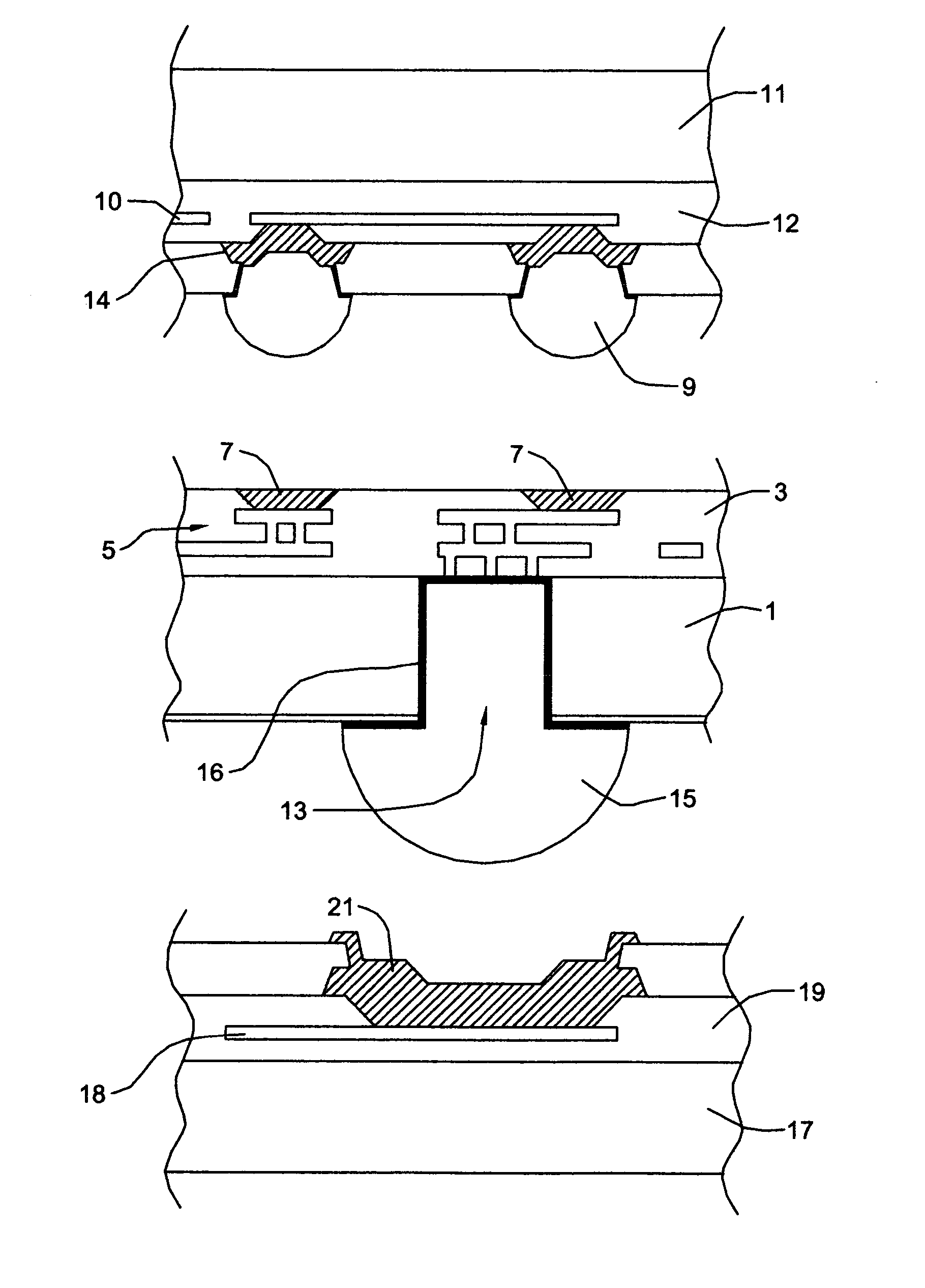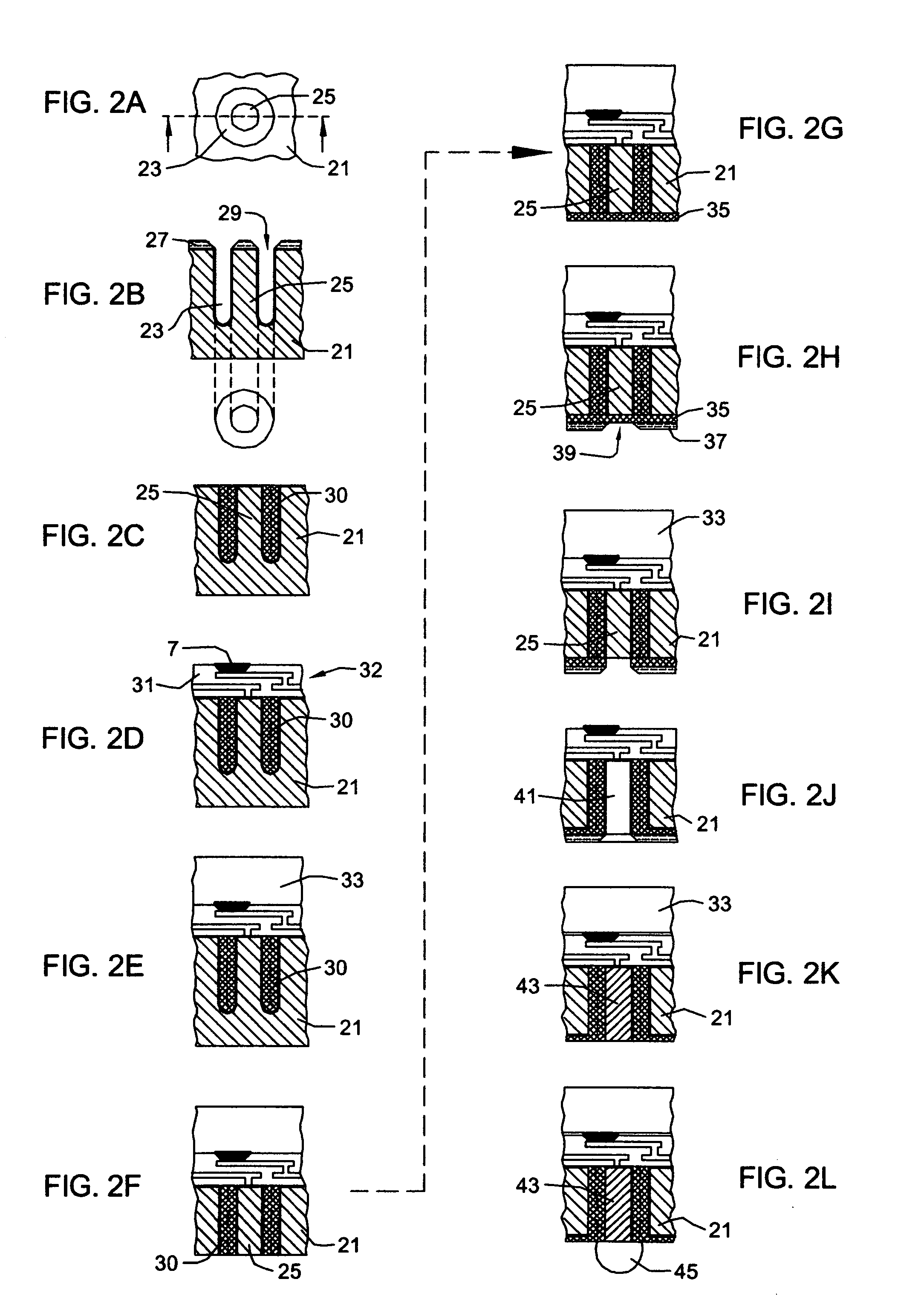Conductive through via structure and process for electronic device carriers
a technology of electronic device carrier and via, which is applied in the direction of coupling device connection, semiconductor/solid-state device details, semiconductor devices, etc., can solve the problems of difficult to completely cover the walls of the bottom level of the via with oxide, difficult to achieve reliable conductive, and difficult to completely fill the via in silicon carrier without leaving voids, etc., to achieve the effect of improving the electronic structure and method of fabricating
- Summary
- Abstract
- Description
- Claims
- Application Information
AI Technical Summary
Benefits of technology
Problems solved by technology
Method used
Image
Examples
Embodiment Construction
[0040] In accordance with the present invention, conductive through vias in electronic device structures, such as, wafer, chips components and the like and in electronic device carriers for same are provided by forming an annulus or ring cavity in the carrier and forming insulating material in the cavity. The carrier material circumscribed by the insulating material is replaced by conductive material to form a conductive through via.
[0041] The process allows for the formation of an annular insulating region that surrounds and isolates the conductive via and that is formed independent of the creation of the conductive via. The process effectively allows the via passivation step to be carried out independent of the via conductive fill step. In addition, since the annulus cavity structure requires far less material to be removed than conventional open cylinder approaches and presents twice the wall surface area on which to form insulation and deposit metal, small annulus gaps may be c...
PUM
| Property | Measurement | Unit |
|---|---|---|
| Electrical conductivity | aaaaa | aaaaa |
| Volume | aaaaa | aaaaa |
| Electrical conductor | aaaaa | aaaaa |
Abstract
Description
Claims
Application Information
 Login to View More
Login to View More - R&D
- Intellectual Property
- Life Sciences
- Materials
- Tech Scout
- Unparalleled Data Quality
- Higher Quality Content
- 60% Fewer Hallucinations
Browse by: Latest US Patents, China's latest patents, Technical Efficacy Thesaurus, Application Domain, Technology Topic, Popular Technical Reports.
© 2025 PatSnap. All rights reserved.Legal|Privacy policy|Modern Slavery Act Transparency Statement|Sitemap|About US| Contact US: help@patsnap.com



